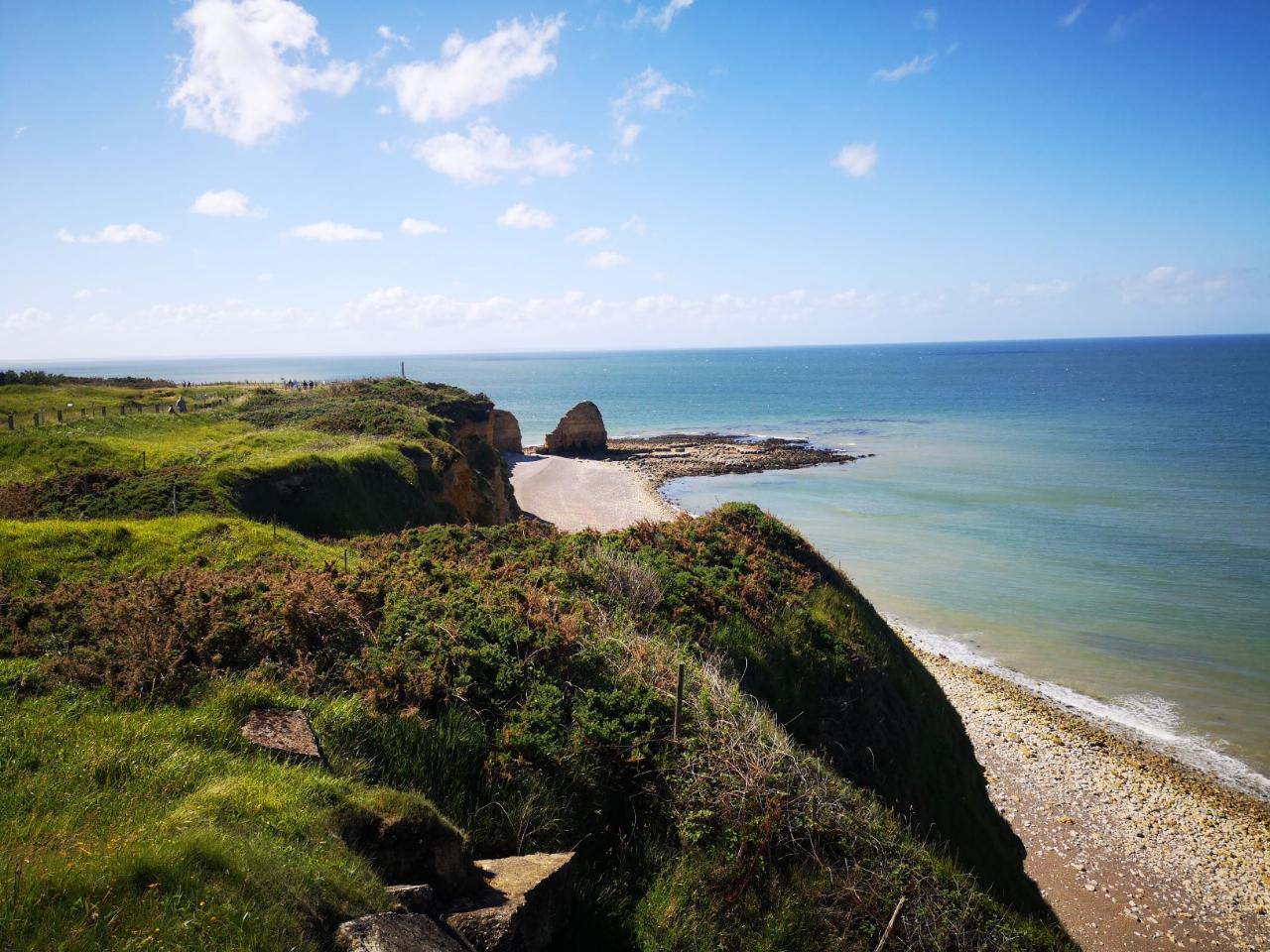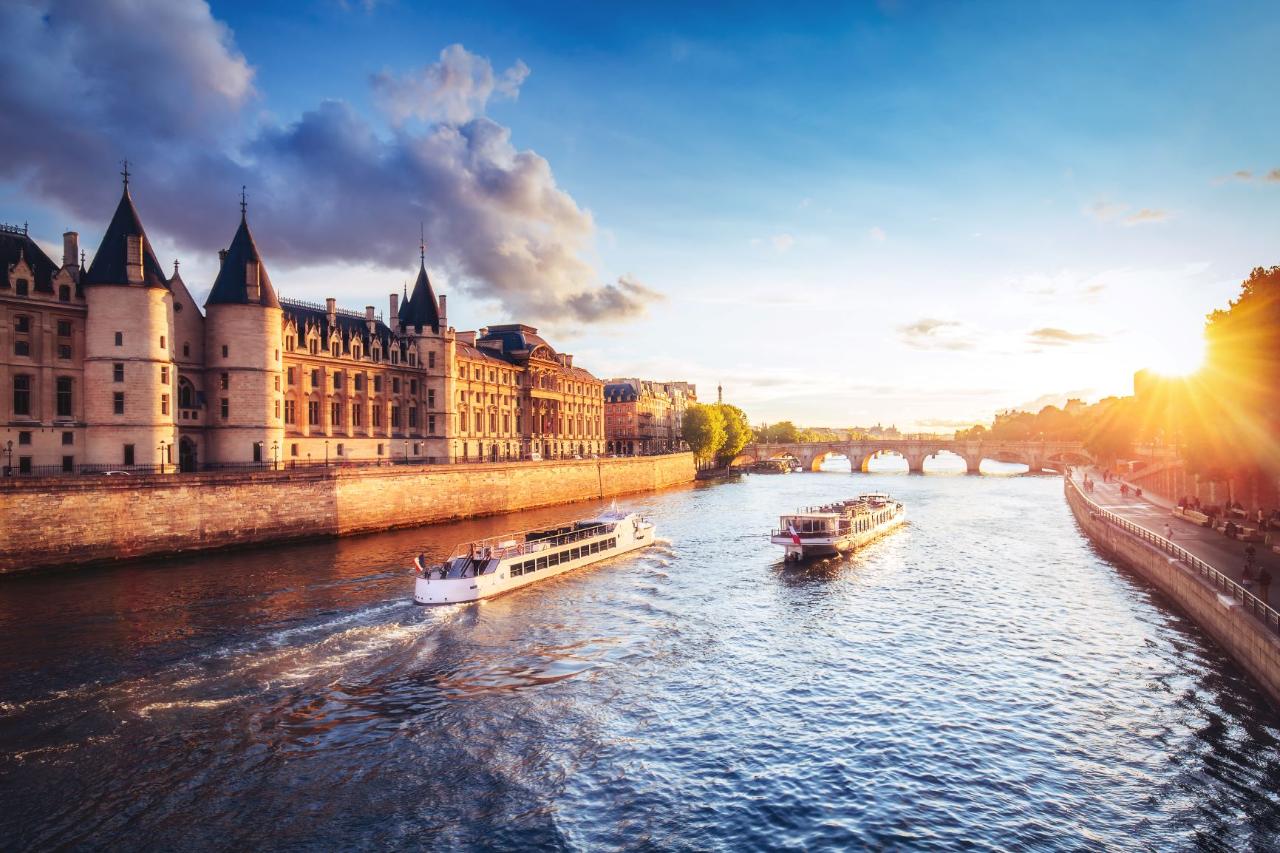Untold Stories: D-Day Beaches Private Tour from Caen

- Duration: 8 Hours (approx.)
Embark on a vibrant excursion to the main US D-Day sites!
Departing from Caen, this private tour will take you to the Normandy coastal battlefield grounds. On June 6, 1944, the allied troops landed on the Normandy beaches, marking the beginning of a fierce and deadly battle that would culminate in the liberation of France a few months later.
Pick up in Caen or surrounding area
First, we will come and pick you up directly at your accommodation in Caen or the surrounding area. Meet your English speaking guide/driver who will go over the itinerary & program of the day with you. As this is a private tour, your guide will be flexible and the tour will be adapted to your wishes in case you have specific requests and as long as the timing allows it.
However, please note that your guide knows the area inside out and will show you the most significant landmarks of the region. Below is a selection of the major sites linked to the U.S forces on D-DAY that it will be possible to visit with your guide. For lunch and depending on the sites that you have chosen to visit, your tour guide will make appropriate suggestions or we can pre-arrange restaurant reservations for you.
Our travel advisors will design the best possible itinerary and guided tours, adapted to your wishes and that will respect the timing of the tour.
Create your own personalized tour in Normandy on this full day landing beaches & sites sightseeing tour
1. Omaha beach
Among the allied troops, the Americans landed on two different beaches named Omaha and Utah. Even though bombings occurred before the landing itself, they failed to neutralize the German positions in that sector. In addition, troops and amphibian vehicles were disembarked too far from the shore, leading to an absolute failure and thousands of men being killed under German fire.
First, you will first reach the coastal battlefield area of Omaha Beach. Here, listen to your guide as you are taken back in time to hear the tale of one of the boldest and most successful large scale invasions in military history. Omaha was by far the toughest assignment in Overlord and was the most heavily defended of all the beaches; its bunkers, fighting positions, and obstacles were intended to repel any Allied landing.
In addition, troops and amphibian vehicles were disembarked too far from the shore, leading to an absolute failure and thousands of men being killed under heat German fire. The assault on this beach was perfectly depicted in the opening scenes of ‘Saving Private Ryan’ movie. Learn more about the landing and the following days as your tour guide explains all the events that took place on the beach and how the battle raged and evolved inland.
2. Pointe du Hoc
Also located in the American sector, visit Pointe du Hoc, a breathtaking cliff offering lunar landscapes, stunning bomb craters and a magnificent viewpoint over the English Channel. Given the toughness of the operation, the Pointe du Hoc was given to Rangers to land upon.
The battle site, dotted with German bunkers was rough, as the Pointe du Hoc had been built as a key point of the Atlantic Wall. It was the highest point between Utah beach and Omaha beach and provided a great observation spot to notice any unfriendly arrivals from the sea. You can still see an artillery gun battery there and feel as if it was still 1944.
Here, Lt. Col. James E. Rudder, commanding the 2nd Ranger Battalion, received the mission to land at 6:30 a.m., scale the 100 foot cliffs, and disable the German positions. Lt. Col. Max F. Schneider’s 5th Ranger Battalion would follow and reinforce them. As you arrive, follow your guide who will give you more information on the site and take in some incredible views of the Normandy beaches.
3. Normandy American cemetery in Colleville
The impressive American Military Cemetery of Colleville-sur-Mer contains the remains of 9.387 American soldiers who fell during the Battle of Normandy. The cemetery reflects and honors the sacrifices that the USA made for the liberation of Europe. From this point one can overlook Omaha Beach, the deadliest landing beach of Operation Overlord.
The American Military Cemetery of Colleville-sur-Mer is the most famous war cemetery in Normandy. Great care has been given to its esthetic qualities. Many elements combine to make a lasting impression: the half circle of columns, the elaborate statuary, the great reflecting pond, and the immaculate park enclosing the graves.
Large maps and commentaries in the loggias explain the Allied operations in Normandy and Northwestern Europe. A vantage point offers a panoramic view of Omaha Beach and an orientation table clarifies the strategic movements during the first days of the invasion. Since 2007 a visitor center welcomes visitors and sheds light on the course of the battles.
4. Longues Sur Mer - German artillery
The German artillery battery at Longues-sur-Mer was perfectly located to oppose the landings of 6 June 1944. Its guns were positioned right between Omaha and Gold Beaches. On D-Day, this battery fought a duel with the Allied fleet before it was silenced at sunset.
One of the most important elements of the Atlantic Wall, the battery at Longues Sur Mer included a range-finding post and four casemates, each housing a 150 mm gun. It was built on a cliff top overlooking the English Channel. In the heart of the Allied assault sector, it played a strategic role during the Normandy Landings on June 6th 1944.
Today, the site is one of the best preserved in France and the only one where you can still see some of the original cannon, capable, at the time, of firing shells weighing 45 kg at a distance of 22 km. The view from the firing command post, dug into the cliff, offers a vast panorama over the Bay of the Seine.
5. Utah beach
Utah Beach was the codename of D-Day’s westernmost landing beach. Here the U.S. 4th Infantry Division came ashore. The Utah Beach landing was quite successful, partially thanks to the Airborne troops who prevented any significant counter attacks against the landing area.
The German strongpoint on the beach of La Madeleine was composed of various shelters and bunkers, a grenade launcher and four canons assigned to cover an antitank zone. These modest defences could not withstand the terrible air and naval bombardments of D-Day.
Five hours before the first seaborne landings, U.S. airborne troops were dropped behind the coastal defences. Fighting their way towards the beach, they cleared the enemy positions that threatened the Allied exit from the beaches. The paratroopers managed to prevent any significant counterattacks.
6. Sainte Mere Eglise
Shortly after midnight on 6 June 1944, D-Day began with the landing of American and British airborne troops on French soil. Two U.S. Airborne Divisions were tasked to establish a bridgehead in the sector of Sainte-Mère-Église, to back up the landing of the U.S. infantry on Utah Beach.
The 82nd and 101st U.S. Airborne Divisions were tasked to establish a bridgehead on the Western flank of the Allied assault. 13.348 paratroopers jumped from 821 Douglas C-47 planes, while 4.400 soldiers were transported in gliders. Their mission was to back up the landing of the American infantry troops at Utah Beach and to help them take Cherbourg as fast as possible.
7. Airborne museum
The Sainte-Mère-Église museum was inaugurated in 1964 right where American paratroopers were involved in fierce battles during the night of 5 to 6 June and the following days. The museum holds an important collection of uniforms, weaponry and other war memorabilia. Two additional buildings opened in June 2014.
This museum is essentially dedicated to the memory of American paratroopers from the 82nd and 101st Airborne Divisions who were dropped over the base of the Cotentin Peninsula. Visitors can appreciate the weapons used by American airborne units during the Second World War.
The American paratroopers and their role in the Landing in Normandy are the focus of the Sainte-Mère-Église Museum. The collection features the deservedly famous troop transportation plane Douglas C-47 (also known as ‘Skytrain’) as well as a Waco glider which cannot be seen anywhere in France other than in Sainte-Mère-Église.








